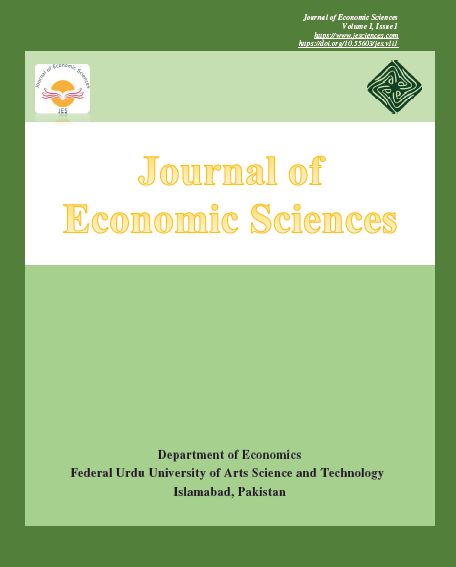Issues of Journal of Economic Sciences
Journal
Journal of Economic Sciences
Editor
Dr Ihtsham Ul Haq Padda
Publisher
Department of Economics, Federal Urdu University of Arts, Science and Technology, Islamabad.
ISSNP
2958-0668
ISSNE
2958-0676
Frequency
Biannual
Article Processing Charges
None
Submission Charges
None
Journal Start Date
2022
Review Process
Blind Peer Review
Subjects
Economics
Languages
English
Editorial Board URL
Author Instructions URL
Author Licence URL
Open Access
Yes
ARI Id
197
This page has been accessed 460 times.
Introduction
The Journal of Economic Sciences (JES) having EISSN 2958-0676 & PISSN 2958-0668 is a biannual, open access, and peer-reviewed journal published by the Department of Economics, Federal Urdu University of Arts, Science and Technology, Islamabad. It aims to encourage and promote original thinking in various fields of economic sciences. The journal also offers a unique perspective on policy issues critical to developing economies and the world. It publishes original theoretical and empirical contributions in economics (all areas) and related fields.
Aims and Scope
The JES aims to encourage and promote original thinking in various fields of economic sciences. The journal also offers a unique perspective on policy issues critical to developing economies in general and South Asia in particular. It publishes original theoretical and empirical contributions in economics (all areas) and related fields. General subject areas include Development Economics, Regional Economics, Agriculture Economics, Urban Economics, Institutional Economics, International Trade, Environmental Economics, Resource Economics, Public Finance, Fiscal and Monetary Policies, Health Economics, Labor Economics, Transport Economics, and Finance. The journal also prefers to publish work in new and emerging fields of economics.
Contact Information
Principal Contact Dr. Ihtsham Ul Haq Padda Federal Urdu University of Arts, Science and Technology Phone +92 300 7904491 editorjes@fuuast. Edu. Pk
| Id | Volume & Issue | Year | No of Articles |
| Id | Volume & Issue | Year | No of Articles |
